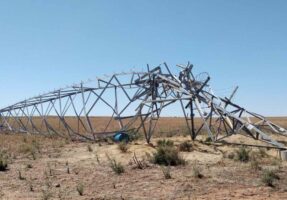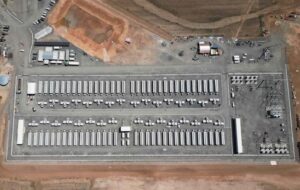One quarter of large-scale batteries have built-in fire risks caused by manufacturing defects in components, according to a new report out of the US.
Audits over six years found that 26 per cent of battery energy storage systems (BESS) have quality problems with their fire detection and suppression systems, says advisory firm Clean Energy Associates.
These faults include fire alarm abort buttons and smoke and temperature sensors not being correctly wired in.
Some 18% of units had defects in their thermal management systems due to parts that weren’t installed properly.
The company audited 52 factories in the US, China, India, Vietnam and South Korea, and found 1300 manufacturing issues in some 30 gigawatt hours (GWh) of lithium-ion projects.
Although only a quarter of all problems came from cell manufacturing – half come when the battery is installed and tested on site – Clean Energy Associates say defects at this stage of a battery project are the highest risk because cells are the building blocks.
Half of all defects were caused during installation, a manual process with less stringent quality control processes, the report said.
These include balance of plant problems such as liquid coolant leakage due to deformed flange plates, defective valves, and malfunctioning temperature, smoke, gas sensors, audible and visual alarms due to internal mis-wiring; mistakes made during the installation of enclosures; and performance testing which saw the largest number of critical and major incidents.
Defects during manufacturing of modules account for 23 per cent of the issues found during audits, which the report says is due to less automated production lines allowing room for imprecision in the way material is handled and poorer welding quality.
In Australia, fires have broken out in two battery projects, at the Victoria Big Battery and more recently the new Bouldercombe battery built by Genex Power in Queensland. Both resulted in minor damage and damage to two Tesla Megapack modules that had to be replaced at each site.
The Bouldercombe fire was caused by a problem in the way the 50 MW/100 MWh battery interfaced with the grid, the company said in a report.
“The failure has been isolated to the power electronics interface with the AC bus bar in the individual Megapack unit itself and not the broader installation of Megapack units,” Genex said in a statement two months later.
“In order to mitigate against a further event, Tesla will be undertaking replacement of two identified power electronics units and out of caution, physical inspection of the power electronics within the remainder of units at the project site.”
Although it’s badly-made e-bike and e-scooter batteries which are currently public enemy number one in terms of battery-based fire risks, the rise of large scale BESS is fuelling worries in some quarters about the risk of fires.
Fires are most commonly caused by poor manufacturing or controls, or high temperatures in the battery. It’s leading to a flourishing arena for scientific research however into batteries that aren’t as flammable – including flow batteries, lFP derivatives and even so-called sodium or “water” batteries.










